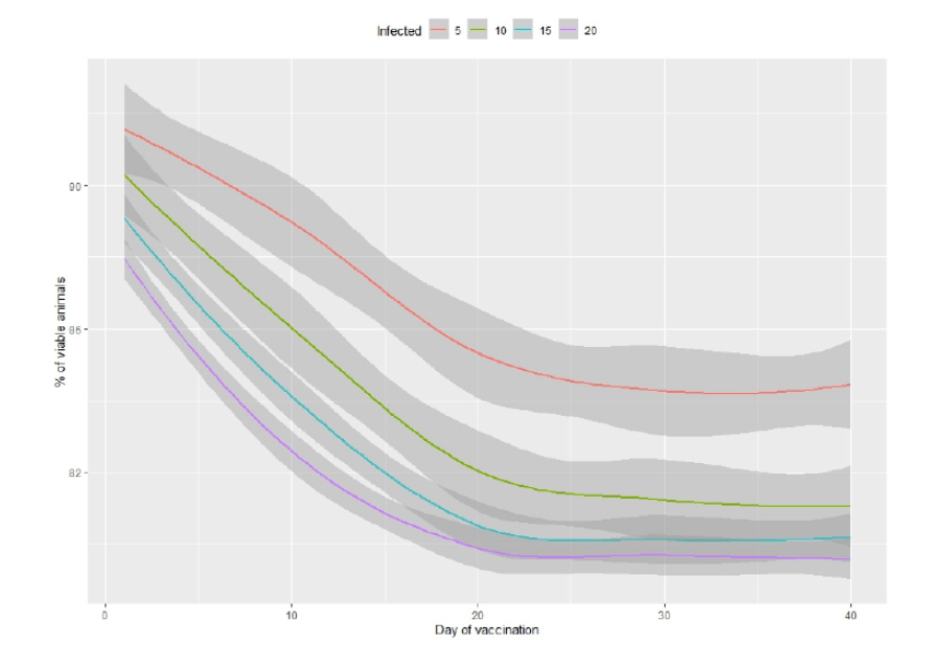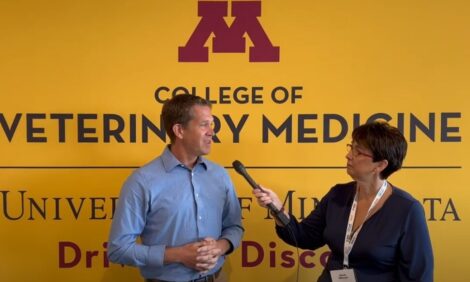



Epidemiological model helps prevent the spread of Aujeszky's disease in pigs
Model reveals importance of early vaccination of more than 75% of pigs on a farm as a key strategy to decrease the spread of an infectious outbreak of Aujeszky's diseaseAccording to the Food and Agriculture Organization of the United Nations (FAO), food production will need to increase by around 70% over the next 30 years in order to support the growing world population. This will not only require increased intensification of agriculture, which should be addressed through the development and implementation of sustainable agricultural policies but also livestock. But increasing livestock production will lead to environmental and health problems, so optimizing its efficiency through strategies that guarantee its sustainability has become a priority challenge.
Infectious diseases are among the factors that most limit the efficiency of livestock production, since its appearance entails losses associated with increased mortality, a decrease in the feed transformation index, increased veterinary costs and the loss of value of infected carcasses. A good example of this can be found in the pork sector, which currently provides the most widely consumed red meat worldwide, and in the health and economic risk that the Aujeszky's disease, one of the most important swine virus diseases.
In Spain, Aujeszky's disease has been eradicated in domestic pigs, but it is present in wild boar (Sus scrofa), which carries a significant risk of reinfection of the domestic swine herd. The direct economic losses associated with an outbreak of Aujeszky's disease for a pig farm free of the disease could be between €350 and €800 per adult female per year.
For pig farms, it is essential to determine the most appropriate strategy to minimize the risks associated with Aujeszky's disease, and one of the most used consists of combine management practices with the use of vaccines. However, so far the way in which this combination, used as a sanitary control tool, could affect the epidemiology of the disease was unknown.
A new epidemiological model, developed by researchers from the University of Lleida and the Instituto de Investigación en Recursos Cinegéticos (IREC – CSIC, UCLM, JCCM), has revealed the effects of combining management practices and vaccination on the control of Aujeszky's disease in a standard pig production system under different epidemiological scenarios.
It is a computational model of population dynamics (known as the “PDP model” for its acronym in English: Population Dynamics P systems), a novel tool that is especially suitable for studying complex dynamic problems efficiently, since it allows to simultaneously consider a large number of interactions between different processes.

The model results indicate that, once a diagnosis of infection is confirmed on a farm, early vaccination of the majority of the population (we are talking about more than 75%) is critical to reduce the spread of the virus and minimize its impact on pig productivity. For their part, management practices seem to have an insignificant effect on virus control, which could be associated with its great ease of spread.
This work highlights the beneficial effects of investing in vaccination campaigns for infection control in the pig sector. Besides, extols the value of mathematical models as predictive management tools to understand the epidemiological dynamics of infectious diseases, something that it has also become apparent for other viral diseases that could affect the pig sector through wild boar, such as African swine fever (ASF). Thus, the present model could be used to evaluate preventive medicine programs, both for the control of known diseases and for new ones that could appear in the future.






